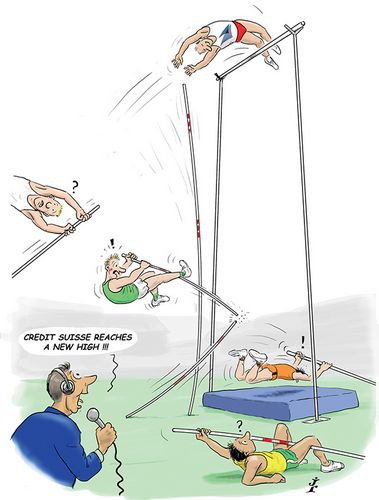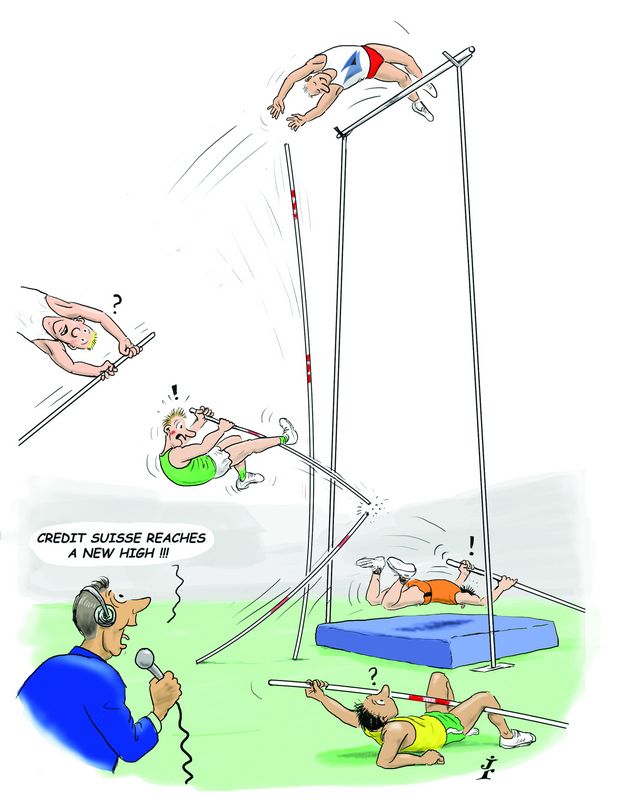It was a watershed year for the US structured finance market, which hit its biggest volumes since the financial crisis despite the bite of new Dodd-Frank regulations. For navigating the new terrain with flexibility and innovation, Credit Suisse is IFR’s North America Structured Finance House of the Year.
In 2014, structured finance was back on full form. It had its biggest year of issuance since the peak of 2007, before the asset class came crashing down in the financial crisis. ABS issuance, for example, had already bettered its full-year 2013 numbers by mid-November.
Credit Suisse led the charge, topping the structured finance league table with 96 deals in the awards period – thanks in part to its strengths in both legacy and new prime jumbo RMBS.
While plain-vanilla ABS unsurprisingly accounted for a lot of the action – cookie-cutter auto and credit-card deals remain the heart of the market – the Swiss bank also broke new ground, adding noteworthy first-time names to the roster and introducing structural nuances that will open securitisation as a financing option to others.
In July, for example, the bank priced a US$722m trade for Dell Financial. While the issuer had previously pooled collateral with CIT Corp, this was the first time it had ever pitched a solo trade to investors, one backed exclusively by Dell’s own computer equipment, server leases and loans.
The transaction, which took roughly six months to put together, came with a low 1% weighted average coupon.
“You can give them credit for getting our programme up and running,” said Thomas Luttrell, Dell Financial’s executive director of treasury. “There were several banks we could have gone to. But we just had more confidence [that] execution would be best with them.”
In the same month, Credit Suisse priced a US$201.5m solar ABS bond issue for panel-maker SolarCity. The deal was nearly three times the size of the issuer’s previous transaction, and in addition was the first-ever solar panel trade to add leverage to an existing tax equity structure.
Figuring out how to structure around billions of dollars in tax equity – a linchpin of growth in the US solar panel industry – had been a significant hurdle for renewable energy companies wanting to tap into ABS funding.
Now the deal is being seen as a template for future such securitisations – and solar renewable ABS issuance is expected to reach US$1bn next year, according to Credit Suisse managing director Stephen Viscovich, who worked on the deal.
“There are more solar loan securitisations on the way,” he said.
Another coup for the bank this year was its structuring of a US$6.5bn prime auto loan credit default swap trade for a US regional bank.
While the deal had yet to be publicly disclosed by the issuer at press time due to regulatory requirements, it is similar to the risk-transfer models being used by Freddie Mac and Fannie Mae to synthetically offload risks associated with their massive residential mortgage portfolios to the private market.
Under a new regulatory regime that requires banks to hold more capital against assets, the new trade frees up more than US$400m in equity for the issuer.
“In the past, these banks would have just exited these lines of business,” said Jon Claude Zucconi, managing director at Credit Suisse in the consumer ABS group. “There is a large opportunity in this area in 2015.”
Credit Suisse also led debut trades for issuers in a broad range of sectors, including Lineage Logistics (cold storage CMBS), Element (railcars), Colony American Homes (REO-to-rental) and Garrison/Prosper (online consumer loans).
It also helped introduce TFC Bank, a Minnesota-based lender with a US$2bn prime auto portfolio, to the securitisation market. After pricing a US$250m 144A trade that was increased from US$200m, the issuer now plans to come to market at least once a year.
“We picked Credit Suisse based on its history in the marketplace,” said the bank’s CFO, Mike Jones.
The goal was to achieve a good selling price while placing the entire trade and residual notes in the market, Jones said – and Credit Suisse made good on the deal.
“We were very pleased with the levels we were able to get,” he said.
Jay Kim, the group head of Credit Suisse’s securitised products asset finance division, said the bank remained focused on forging a new path into the future.
“2014 was not about what have we done,” Kim said, “but clearly all about where we are going.”
To see the digital version of the IFR Review of the Year, please click here.
To purchase printed copies or a PDF of this report, please email gloria.balbastro@thomsonreuters.com.



